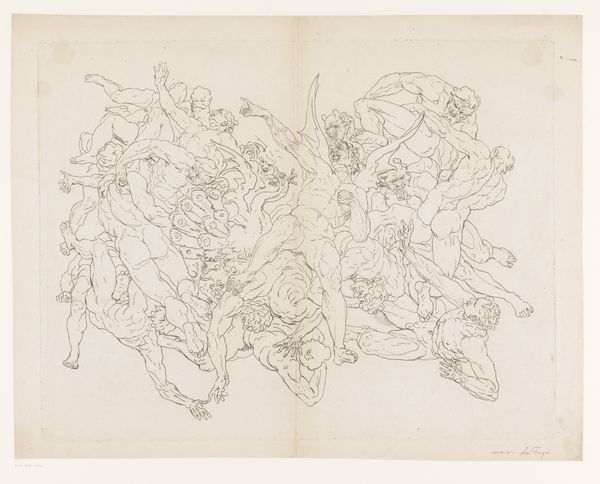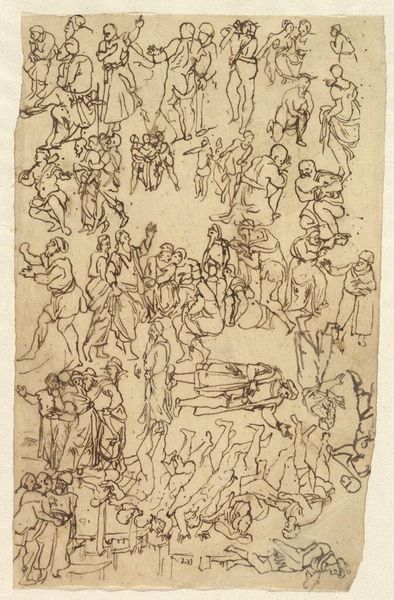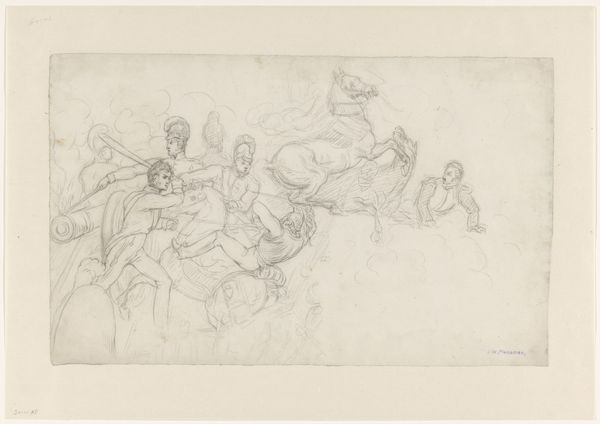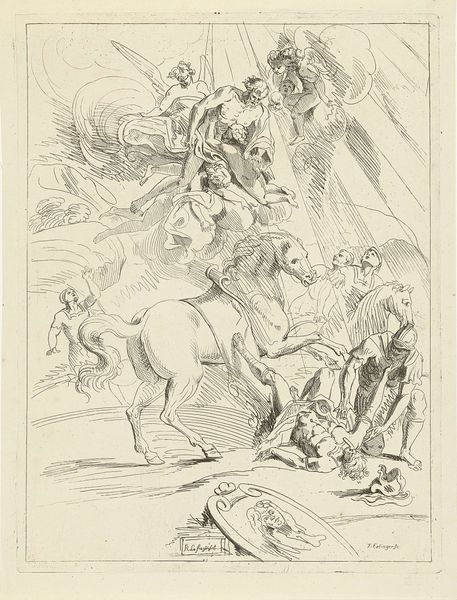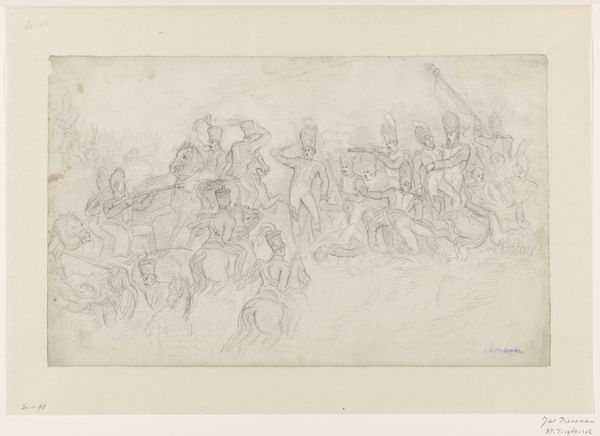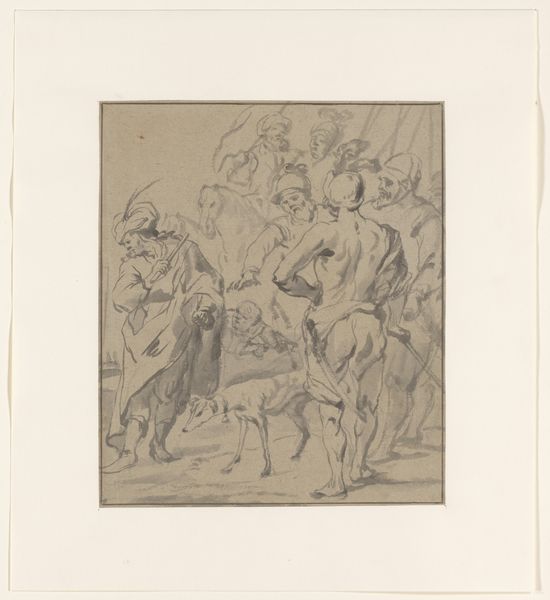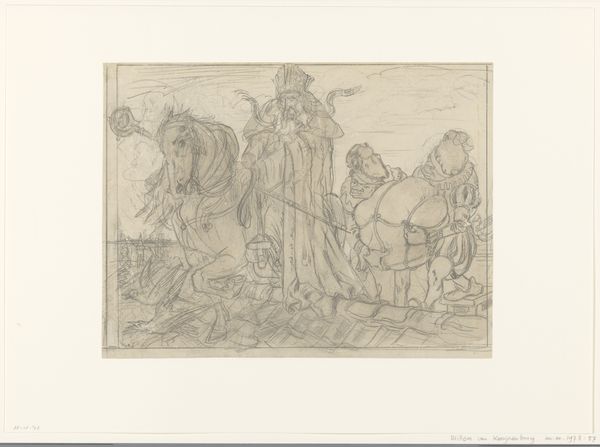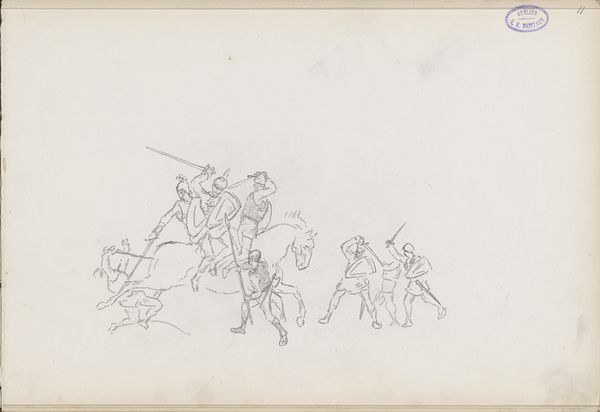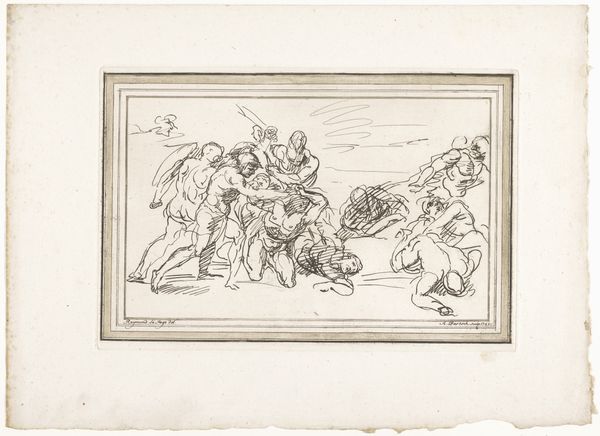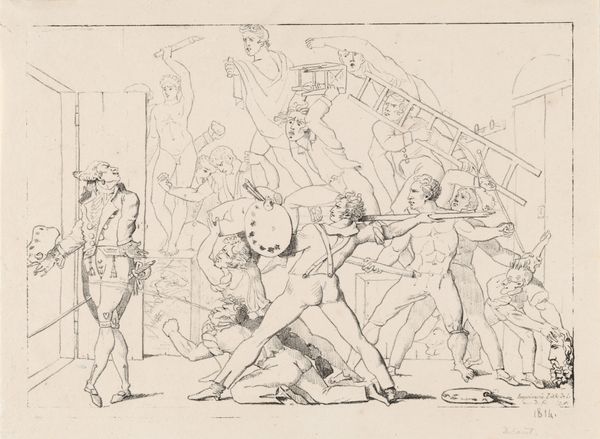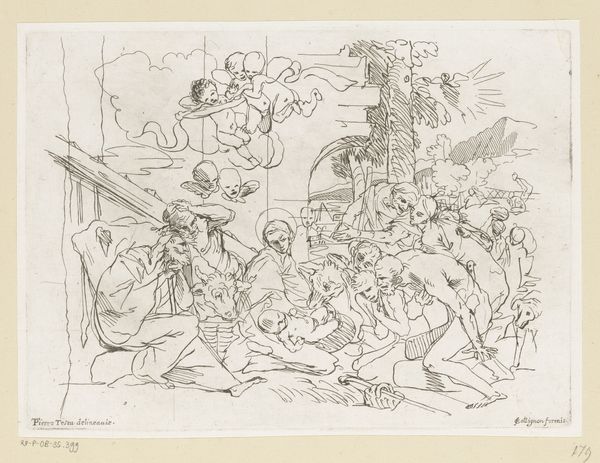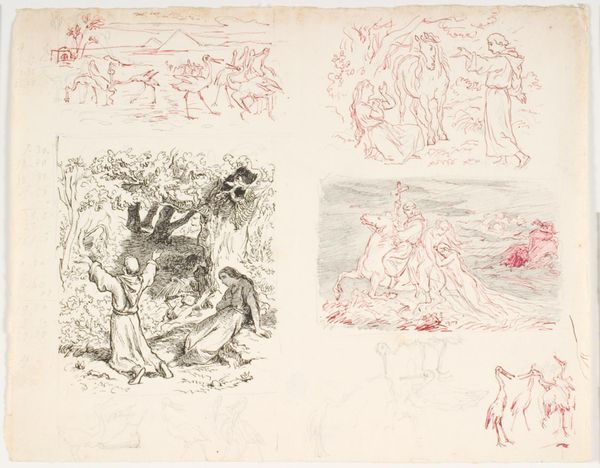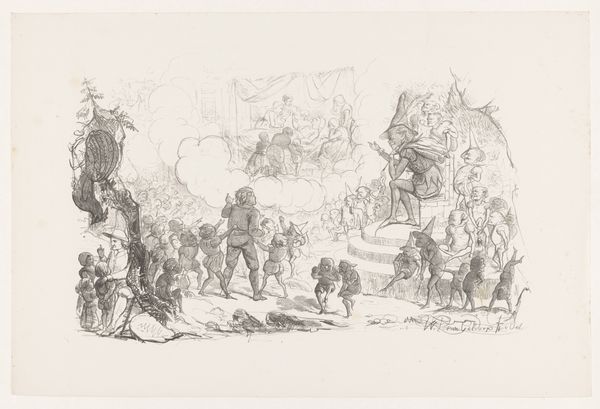
drawing, ink, pen
#
portrait
#
drawing
#
ink drawing
#
medieval
#
pen sketch
#
figuration
#
form
#
11_renaissance
#
ink
#
line
#
pen
#
genre-painting
#
history-painting
#
northern-renaissance
#
academic-art
#
miniature
Dimensions: height 213 mm, width 265 mm
Copyright: Rijks Museum: Open Domain
Curator: This drawing, "Studieblad met ruiters en paren" which translates to "Study Sheet with Riders and Couples," is attributed to Hendrik Abraham Klinkhamer and estimated to have been created sometime between 1820 and 1872. Editor: It feels almost dreamlike, the way the figures are scattered across the page with such a delicate hand. The light inkwork gives it a feeling of ephemerality, as if these scenes are fleeting thoughts. Curator: Indeed. It’s a fascinating look at how Klinkhamer engages with historical imagery. While he lived in the 19th century, the drawing pulls its subjects from the Northern Renaissance and even hints at the medieval, showcasing an interest in retrieving and reinterpreting historical themes within his contemporary artistic framework. Editor: I see that. The linework, in particular, strikes me. Notice the fine, almost etched quality, giving the figures weight and form. And the repetition of the curves—in the horses’ manes, the billowing fabric—creates a sense of visual harmony across the entire sheet. Curator: The choice of pen and ink as a medium reinforces its connection to the traditional methods of artistic study and reproduction. Artists often used such drawings to meticulously copy and study works that preceded them, creating something new through the very act of transcription and study. It reminds us of the academic art system and its revival throughout the nineteenth century. Editor: The academic tradition clearly emphasized draftsmanship. It’s fascinating to observe how the formal properties – the delicate shading, precise outlines, and careful composition of these individual figures - contribute to a broader feeling of nostalgic romanticism. Curator: Absolutely. This "Study Sheet," viewed through our modern lens, presents us with crucial visual clues. It indicates how 19th-century artists like Klinkhamer participated in, shaped, and engaged with an ongoing dialogue about art and history. These dialogues informed the cultural values and aesthetics of that time. Editor: It’s almost as if Klinkhamer is inviting us into his studio, to witness his creative process unfold right on the page, where form and reference coalesce into a unified visual experience. Curator: Precisely. This drawing offers a fascinating glimpse into 19th-century artistic and cultural dynamics. Editor: Indeed, a testament to the power of the single line, brought to life by careful rendering, a dance across time and history.
Comments
No comments
Be the first to comment and join the conversation on the ultimate creative platform.
